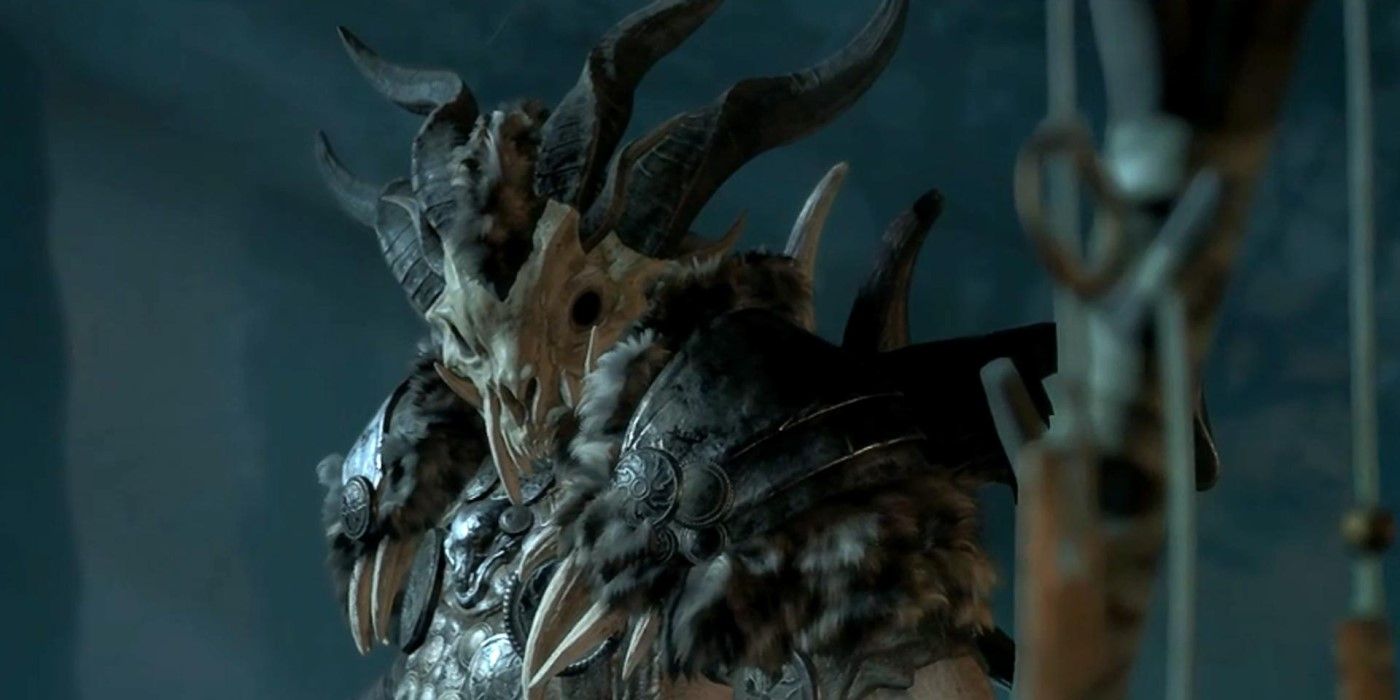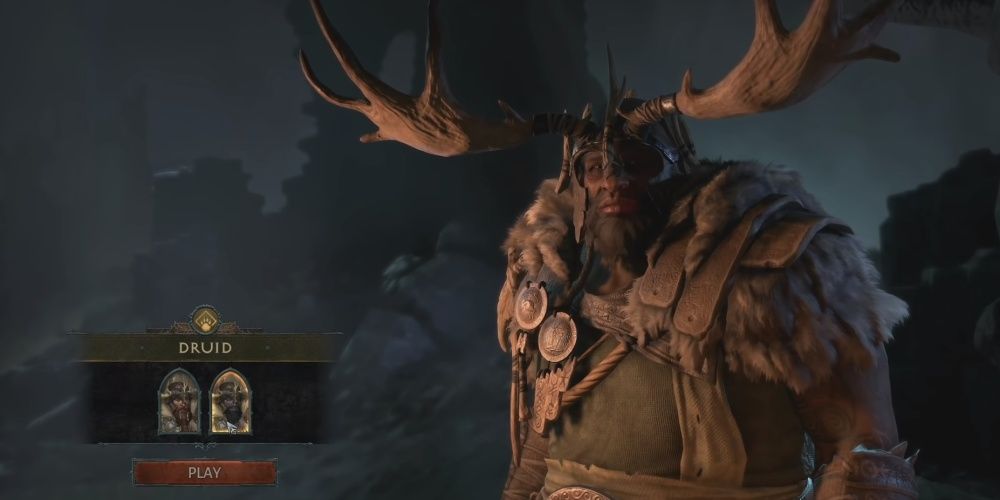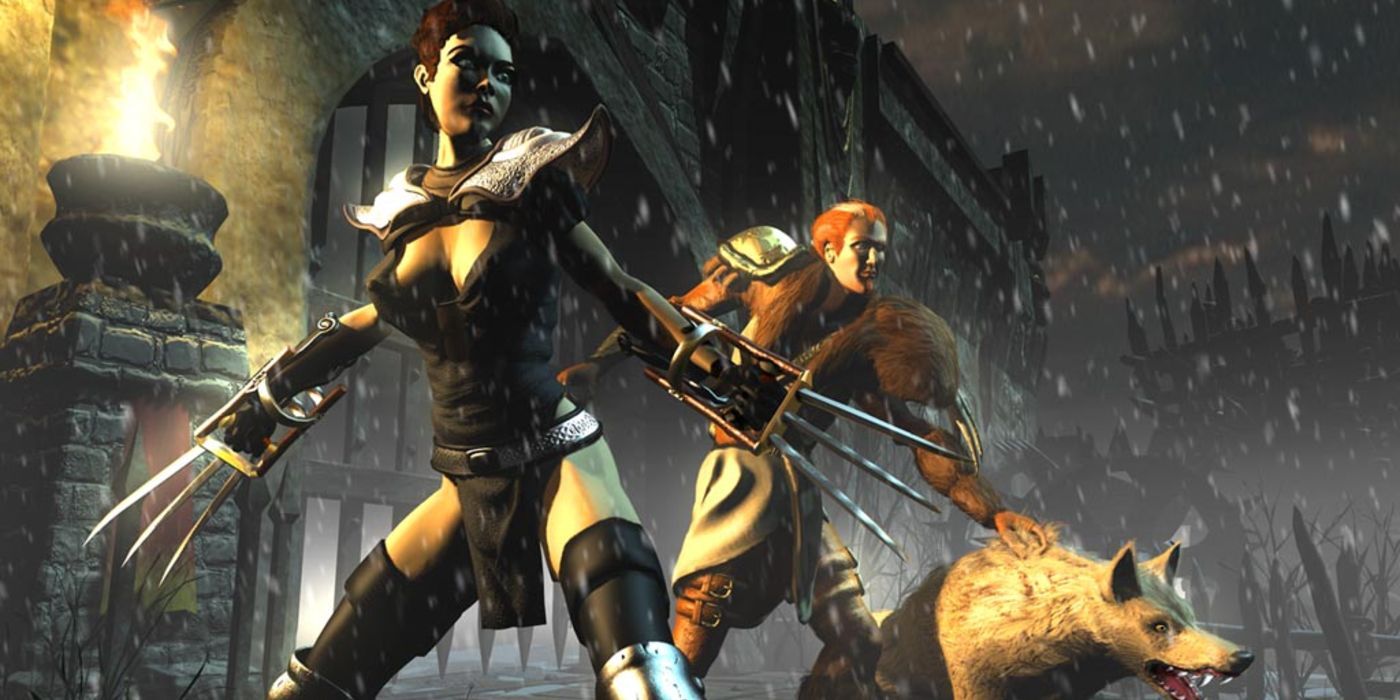
Diablo 4 and Diablo 2: Resurrected are the two upcoming titles in Blizzard's long-running action-RPG series. While Diablo 4 is the next main game in the series, Resurrected is a remaster of 2000's Diablo 2. Despite this, both Diablo 4 and Resurrected will stick close to the series' formula, and therefore share a lot of similarities.
One of the features that both games will have is the Druid as a playable class. The Druid is one of the least used classes in the Diablo series, having only appeared in Diablo 2 before now. Therefore, it's interesting to look at how each game will be approaching the hybrid-spellcaster.
RELATED: Blizzard Warns Players About Fake Diablo 2: Resurrected Alphas
In both Diablo 4 and Diablo 2: Resurrected, one of the Druid's most defining skills is his ability to shapeshift. In both games, the Druid uses a special skill to take on the form of either a Werewolf or a Werebear. While only one of these skills can be active at a time in Resurrected, they remain so until the Druid decides to change form again.
By contrast, the transformation only lasts 3 seconds in Diablo 4, before the Druid reverts back to human form. However, rather than being tied to a single skill, shapeshifting in Diablo 4 is attached to range of skills. For example, a Druid can use the Shred basic skill to transform and attack as a werewolf at-will. They can also use more advanced skills like Ravenous Bite to sustain the transformation, or to change forms.
Just like the Druid in Diablo 2: Resurrected, the Diablo 4 Druid's skills are all limited to one or two forms. This means that after using a shapeshifting skill to transform into a werewolf, the Druid won't be able to cast spells that require human form until they've turned back. In Diablo 2: Resurrected, only certain specific spells can be cast in werewolf and werebear forms.

The second important skill group available to the Druid in both Diablo 4 and Diablo 2: Resurrected is elemental spells. It's these skills, combined with shapeshifting, that made the Druid one of Diablo's most versatile classes. In Diablo 2: Resurrected, the Druid has access to spells influenced by the forces of nature, including fire, earth, ice, and wind. However, the skill tree is laid out in two distinct branches, fire and wind. It's actually impossible to take the fire-based ultimate skill Armageddon without taking the ultimate skill Hurricane first.
In Diablo 4, the Druid also uses elemental spells, but with a slightly different focus. Blizzard made the decision to cut fire and ice from the Druid's skill-set, and instead have his spells focus on storm and earth magic. This choice may have been made to avoid overlap between the Druid and the Sorceress. The Druid in Diablo 4 has a wide range of elemental powers to choose from, ranging from basic skills all the way up to ultimate abilities.
RELATED: Valheim Player Recreates Old Tristram from Diablo
The final pillar of the Druid in the Diablo series is summoning skills. These abilities allow Druids in both Diablo 4 and Diablo 2: Resurrected to summon NPC companions to fight alongside them. In Diablo 2: Resurrected, the summoning tree can be roughly divided into beasts, plants, and spirits. Beasts do the most damage, but have few other benefits, plants provide both damage and utility, while spirits give buffs to the Druid and their group.
The Druid in Diablo 4 has significantly fewer summoning skills than his Diablo 2: Resurrected equivalent. However, each of the three skills have both active and passive components, and have a large number of Talents to modify them. Having the Wolves skill will passively summon a pair of two wolves to fight alongside the Druid, which can then be set upon a specific enemy using the active skill. The Ravens and Vine Creeper function similarly, but neither can be attacked while in their passive forms.
While the summoning skills in Diablo 2: Resurrected have to be summoned again once killed, the wolves of Diablo 4 return automatically. In their passive mode, the two wolves will respawn automatically at the Druid's side if they die. However, if the Druid dies then the summons will despawn immediately.

While the Diablo 4 Druid class has maintained the original style from Diablo 2, it does make several changes to further differentiate the class from its peers. The only class announced for Diablo 4 that wasn't in Diablo 2 with the Druid so far is the Rogue. This gives the Druid another hybrid class to compete with, albeit with a very different flavor.
Diablo 4's Druid also needs to set itself apart from the Sorceress, which has been achieved by changing its spell focus, and the Barbarian, with which it shared themes in previous games. While Diablo 3's Barbarian made a heavy use of earth magic, these skills have been dropped in Diablo 4. This choice was almost certainly made to allow the Druid to feel more like a distinct class, with its own strengths and style.
Diablo 4 is in development.

